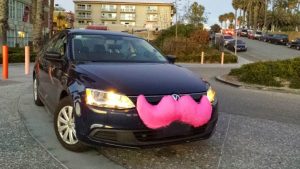With the steadily increasing popularity of Uber and Lyft, it seems ride sharing is becoming a popular mode of transportation for business travel. If you rely on it regularly, what are the best ways to save money? We’ve done some research and here’s what we found:
Booking in advance allows you to secure a ride when you need it, instead of waiting when you’d really rather be on your way. You’ll save money by scheduling your ride when you know it’s not rush hour. If you use Lyft, scheduling locks in your fare; Uber doesn’t offer that feature.

Search online for coupons. Both companies are competing for customers, so do a little poking around on either company’s official site or at sites like Groupon. Uber offers free rides for those who refer a friend who downloads the app, so if you’re traveling with a friend, have him or her download the app with your referral link, and you can both get a free ride to wherever you’re going.
Avoid traveling during surges. Fares are adjusted automatically, based on demand. For example, prices soar after events because of the demand for drivers, so if you can wait, the cost will drop. Don’t think you’ll get the average fare for a trip you’ve taken before if you’re among the throngs waiting for a ride.
If you move away from the surge venue, though, you’ll find a cheaper ride. For example, the fare just after the conclusion of a Miami Heat game from the arena to a Ft. Lauderdale hotel was $90. Two blocks away, it fell to the regular price of $37. It pays to know what the normal fare is, and be aware when the app warns of surge pricing.
An app called SurgeProtector helps Uber passengers avoid high rates by showing surge areas in real time. While its accuracy isn’t 100 percent, it’s another piece of evidence that time is on your side when using ride sharing.
An alternative to ride sharing is ZipCar. The subscription car sharing club offers you access to a vehicle whenever you need it, whether for an hour or up to seven days, without worrying about gas, insurance, maintenance, and parking. ZipCar is available in 23 metropolitan areas across the US and ten Canadian cities. ZipCar also has fleets available at over 100 universities. Individual and corporate plans make this option not only good for short-term car needs, but as an alternative to traditional car rental.
Have you ever gotten burned on ride sharing surges? How did you handle it? Any advice you can share with us? Let us hear from you in the comments below, on our Facebook page, or in our Twitter stream.
Photo credit: Praiselightmedia (Wikimedia Commons, Creative Commons 4.0)
